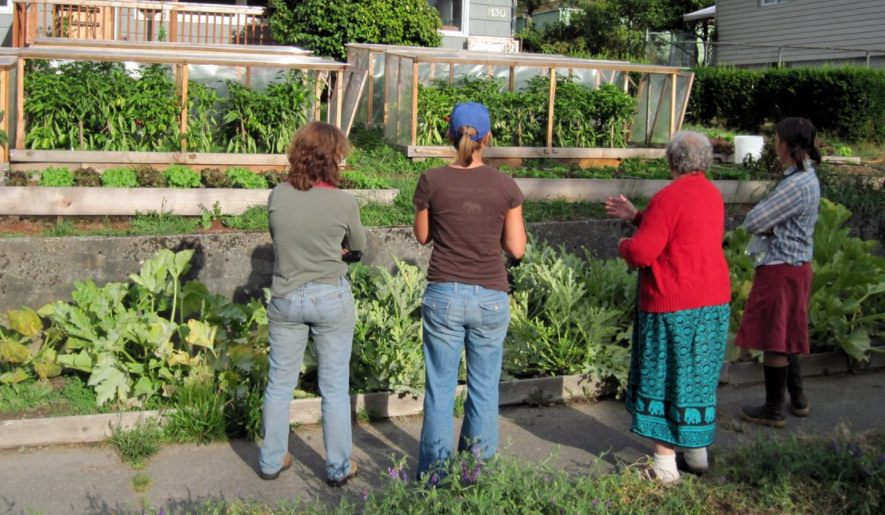
1. Block weeds
Smother existing weeds and prevent new ones from growing by placing a thick layer of newspaper around your plants. The newspaper will keep sunlight from reaching weed seeds within the soil, preventing them from sprouting. Weed seeds blown across this protective layer are also easier to spot and remove. For a less messy appearance, wet the soil first and then lay the newspaper down. Wet it again thoroughly before covering it with a thick layer of organic compost or mulch. Be careful not to build up the mulch or compost too tightly around the stems of plants. Doing so could prevent plants from growing properly. Aside from stopping weed growth, using newspapers this way is a great way to recycle them. Newspapers serve as food for earthworms as well. Earthworms increase the amount of air and water that gets into the soil, so it's good to have them around. (Related: The humble earthworm may hold the key to preventing or treating fever.)2. Crowd out weeds with grass
Overseeding, or sowing seeds too close to each other, is a bad idea when using containers, pots and raised beds outdoors. But overseeding is crucial to maintaining a clean, weed-free lawn. The idea is that the closer grass blades grow together, the less room there is for weeds. Some plants also thrive when planted near certain plants. Look up which plants grow well when near each other and plan your garden plots accordingly. Plus, mowing the lawn regularly is better than having to lose your garden to weeds. When mowing, only cut off a third of grass blades. Leave the clippings on the lawn. They will help nourish the soil as they break down. Moreover, keeping grass blades long allows them to shade the ground, preventing sunlight from reaching weed seeds within the soil.3. Grow plants on raised garden beds
Raised bed gardening involves growing plants in soil that is higher than the ground. This is usually done with a type of enclosure. Raised beds make it harder for weeds to flourish because weed seeds would have to go through several inches of soil. The enclosures also effectively serve as a physical barrier to weeds. Furthermore, soil in raised garden beds tends to be looser than soil on the ground. Even if some weeds were able to take root in a raised bed, they would be easier to pull out by hand.4. Pull out weeds from the roots
You can get rid of weeds the old-fashioned way, that is, by plucking them from the ground. This method is best for a few weeds scattered around the garden since weed-pulling can be exhausting if done for long periods. For best results, wear gardening gloves and pull out weeds from the roots. Dispose of them properly. Herbicides persist in the soil, contaminate groundwater and harm beneficial soil microbes. These products can also pose a serious health risk to insects, animals and humans exposed to them. Therefore, it's better to use chemical-free methods of controlling weed growth than treating soil with harmful chemical herbicides. Learn more about natural methods of weed control at HomeGardeningNews.com. Sources include: VeryWellHealth.com SafeWater.org JustPlainCooking.caSurvival essentials: Here’s why you should grow food in your home garden before SHTF
By Zoey Sky // Share
5 Machines preppers need in their homestead before disaster strikes
By Zoey Sky // Share
How to make DIY non-toxic mosquito repellants with essential oils
By Virgilio Marin // Share
How to grow, harvest and use turmeric, a versatile superfood
By Divina Ramirez // Share
22 Different hobbies you can take up that can also improve your survival skills
By Arsenio Toledo // Share
Prepper must-haves: 10 Survival uses of hydrogen peroxide
By Virgilio Marin // Share
A new golden era: Bullion's meteoric rise defies conventional wisdom
By willowt // Share
Omega-3 fatty acids: A natural shield against depression and anxiety
By patricklewis // Share
Untreated sleep apnea accelerates cardiovascular aging and increases mortality risk, new study warns
By patricklewis // Share











